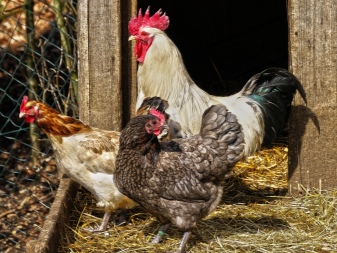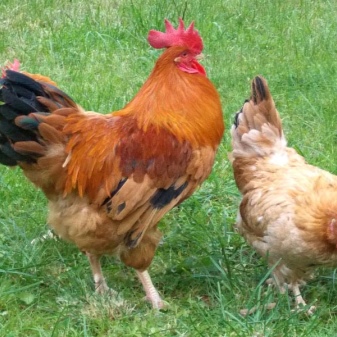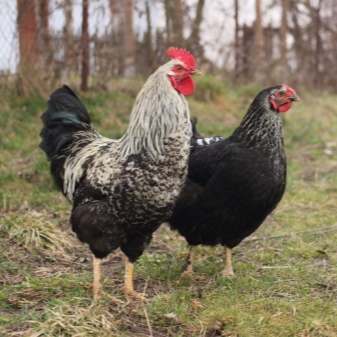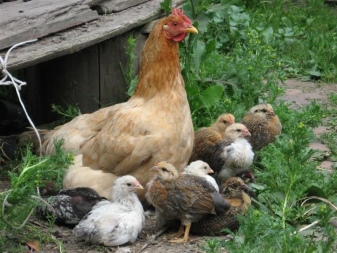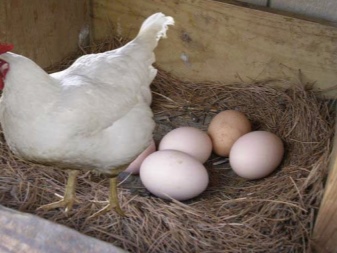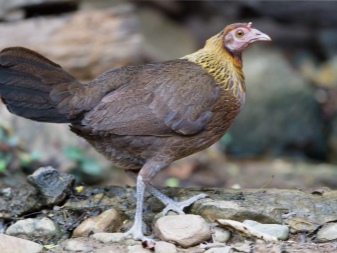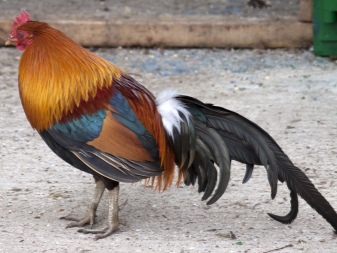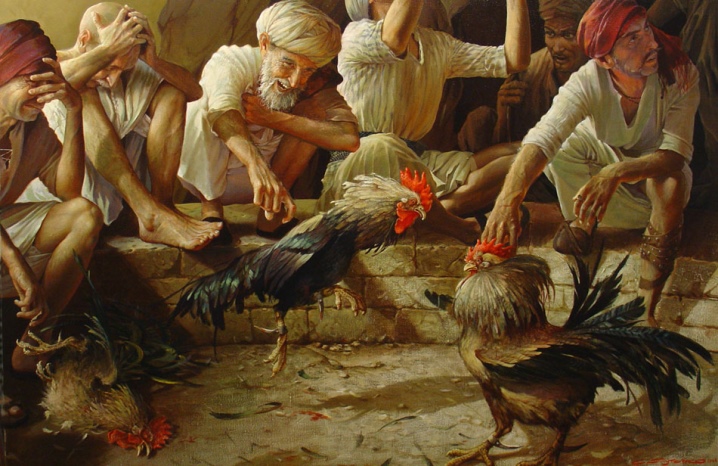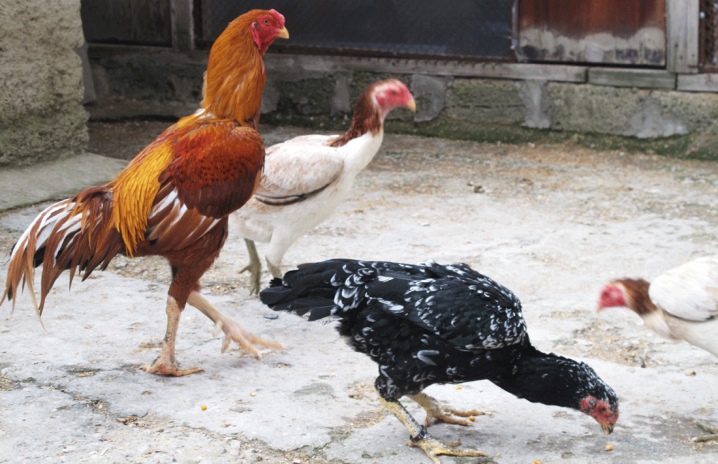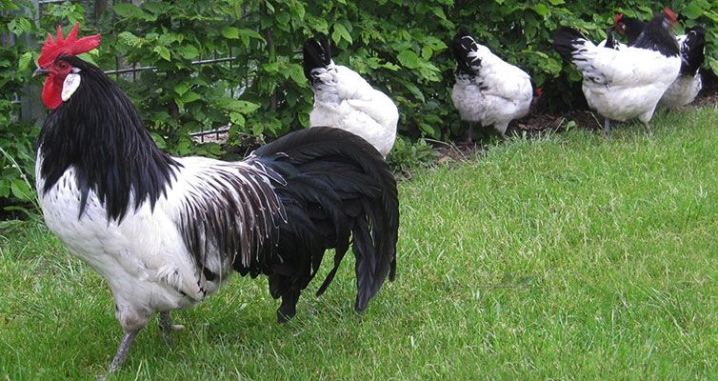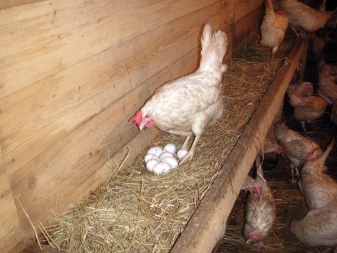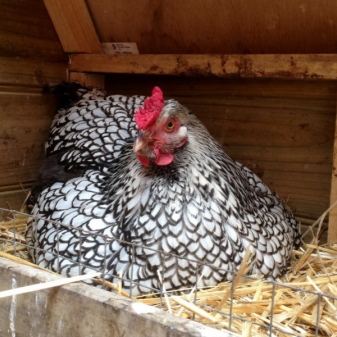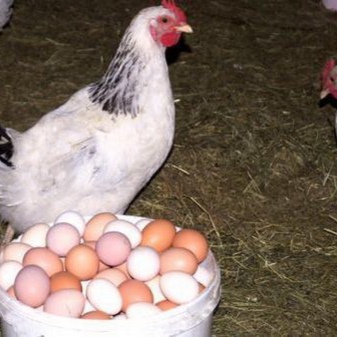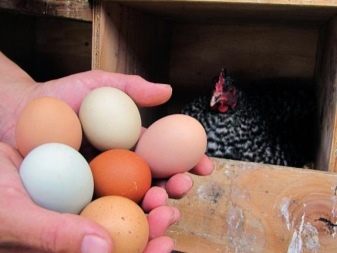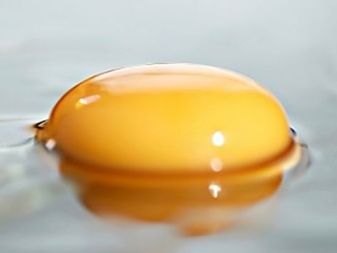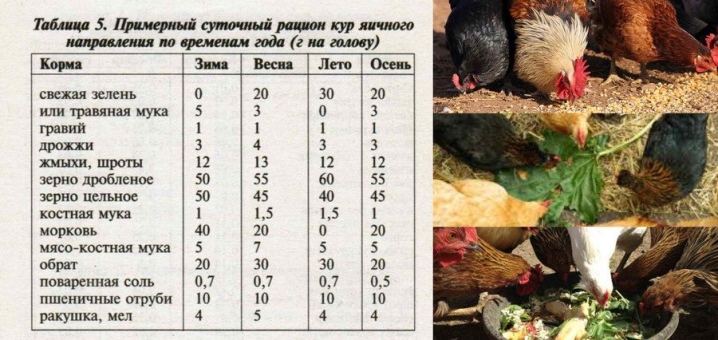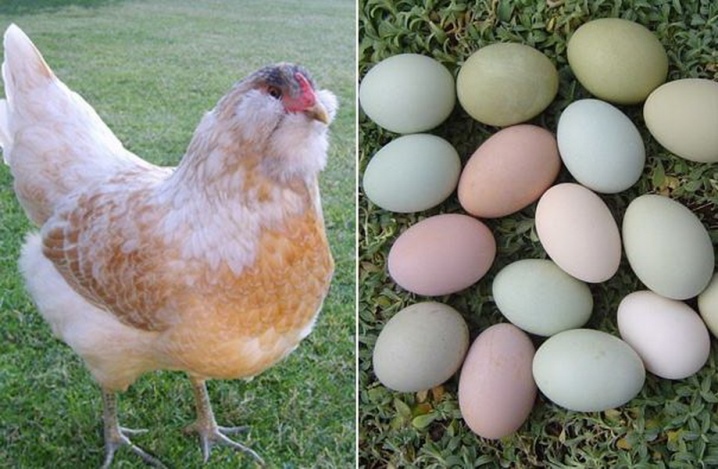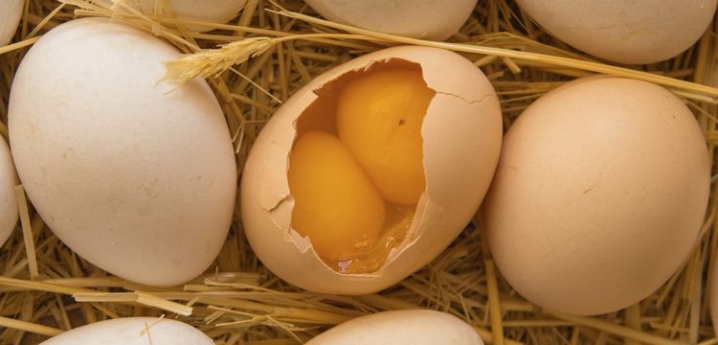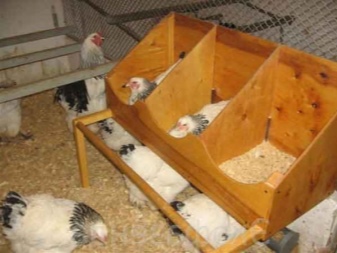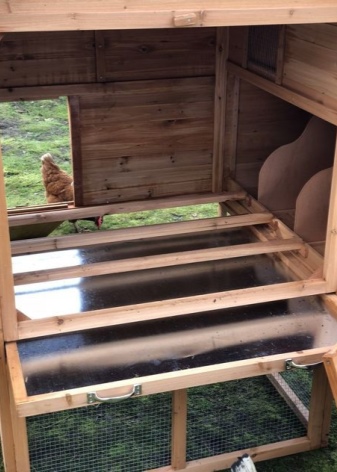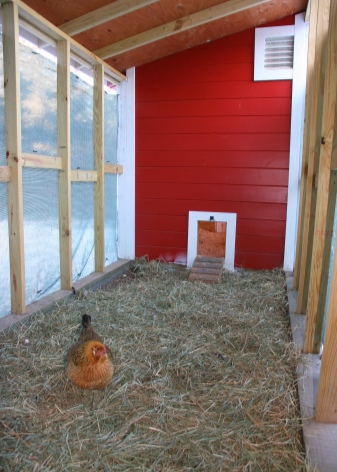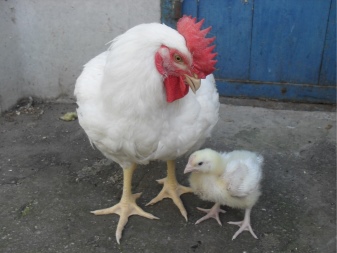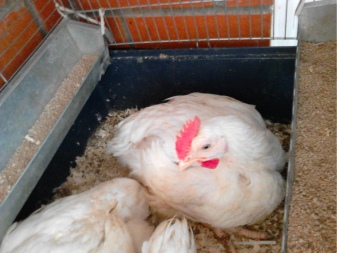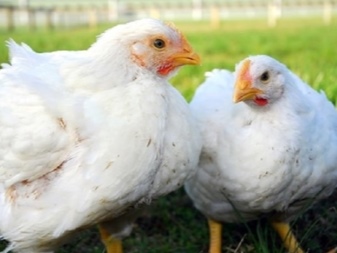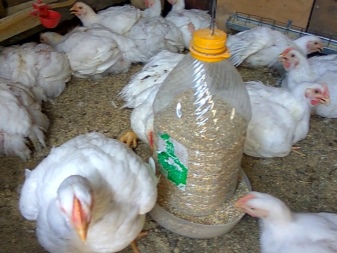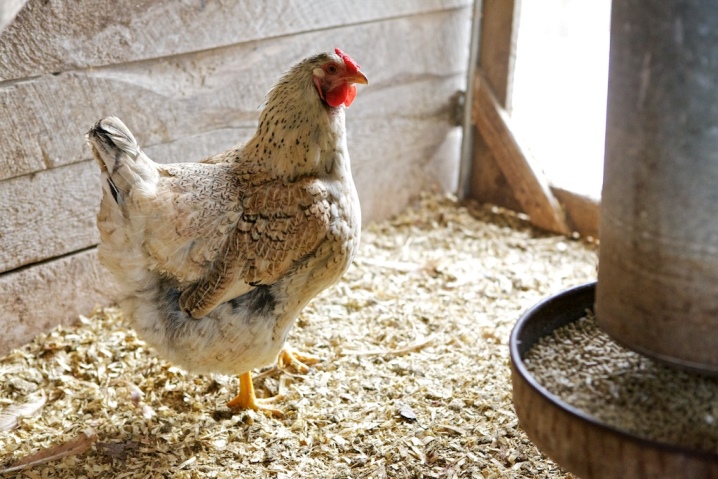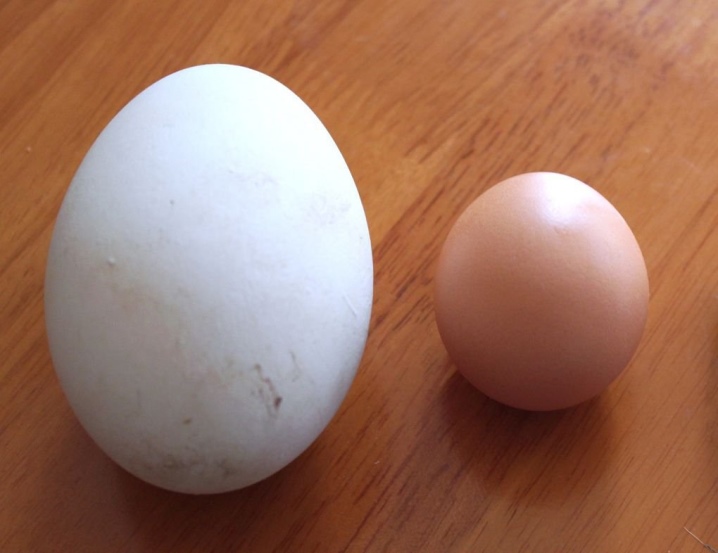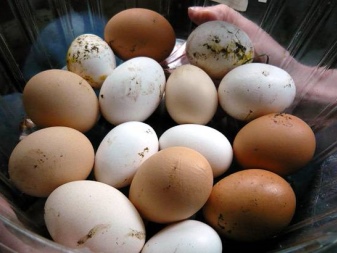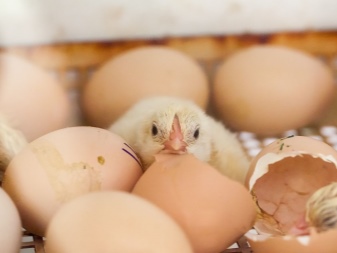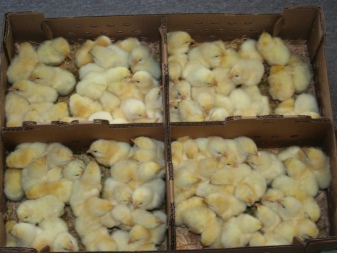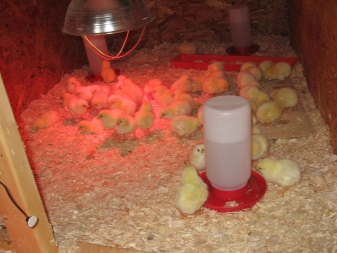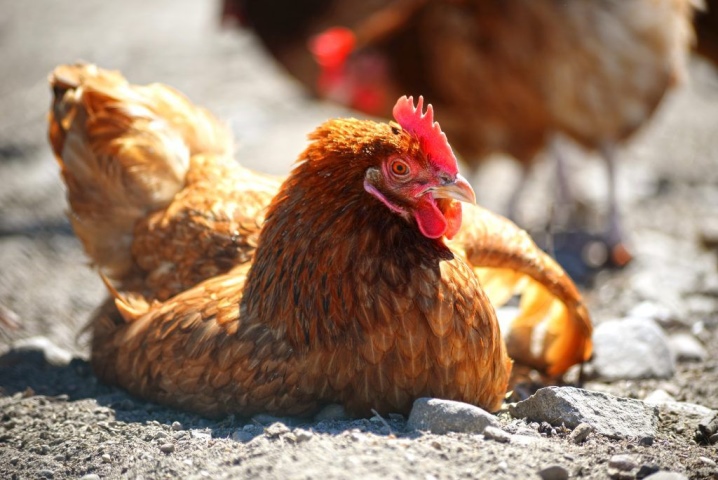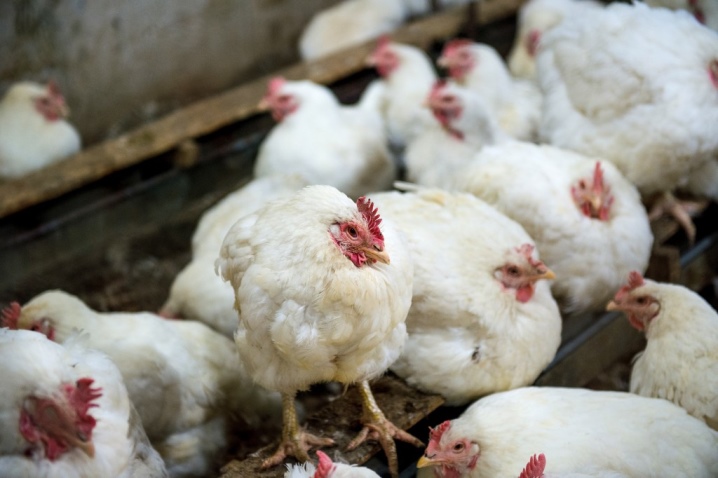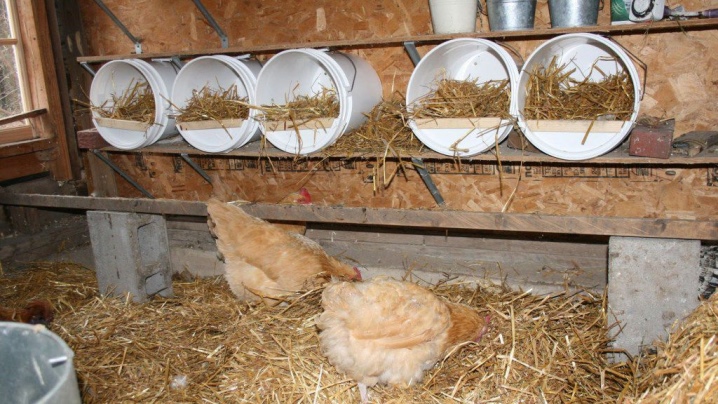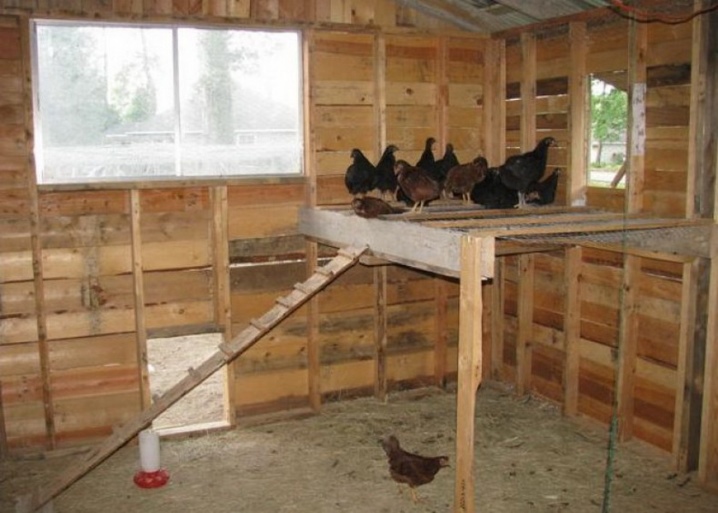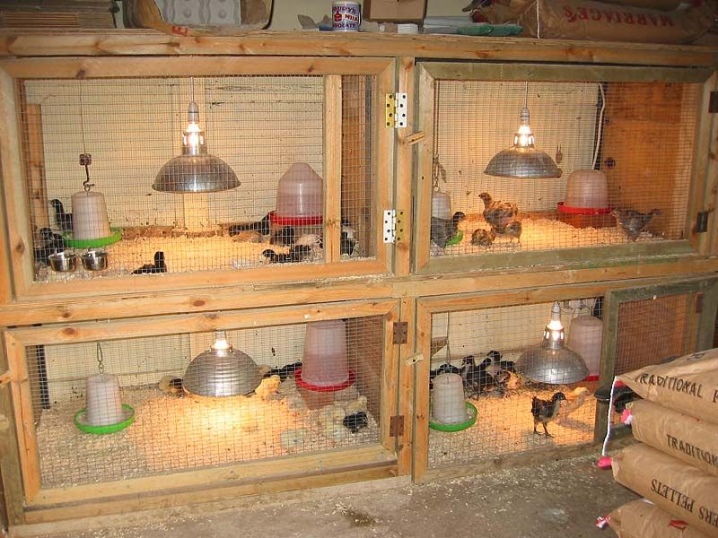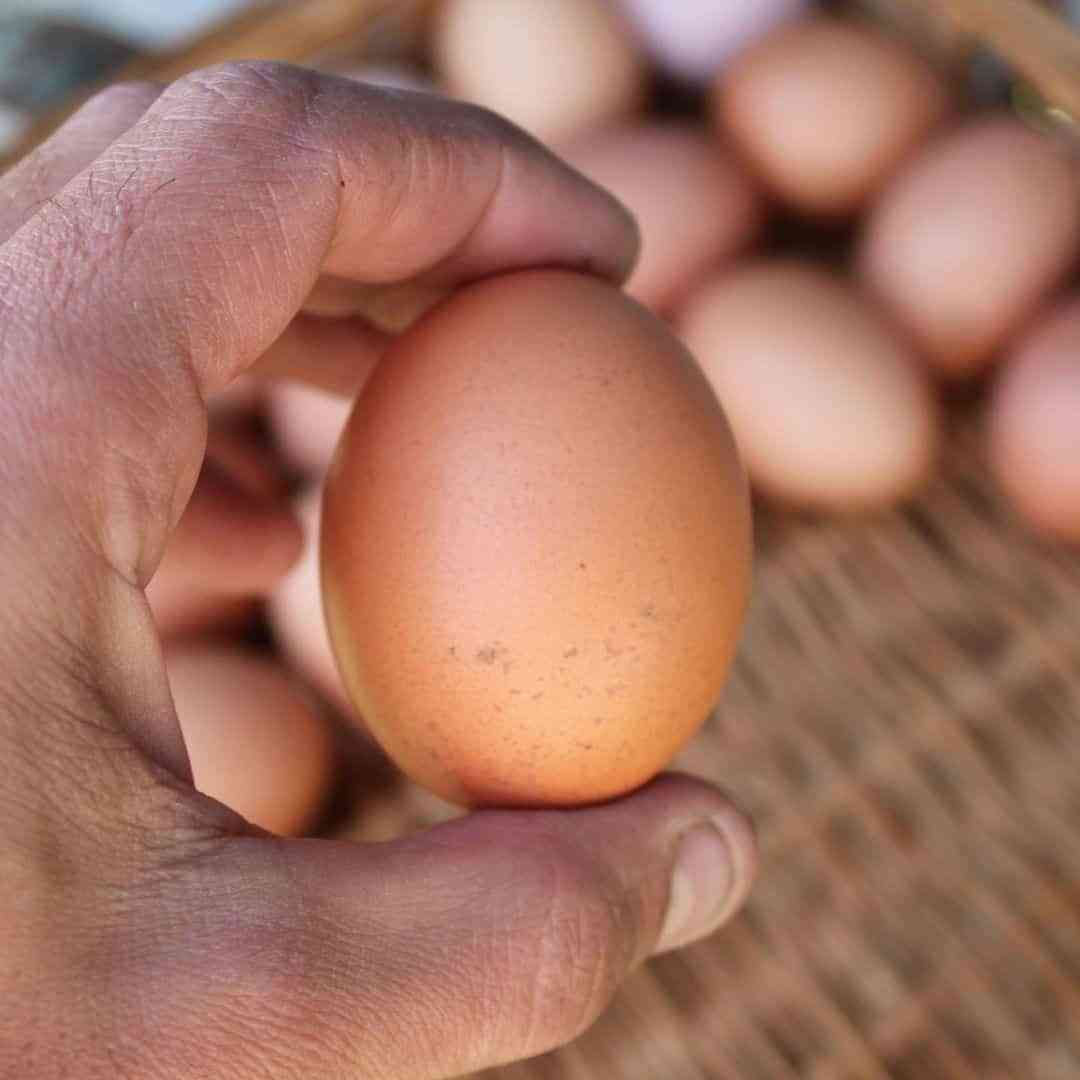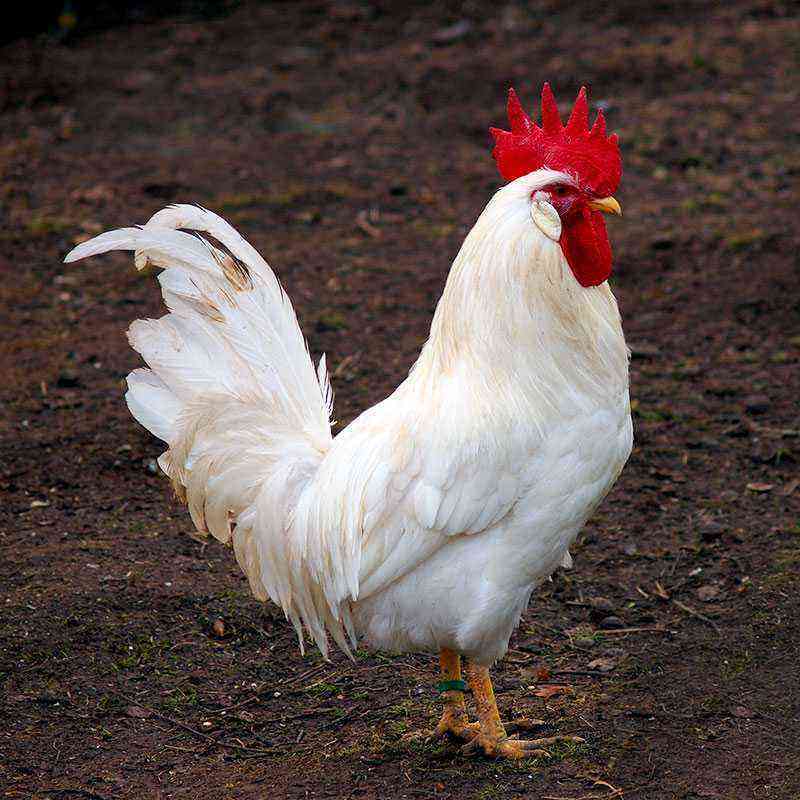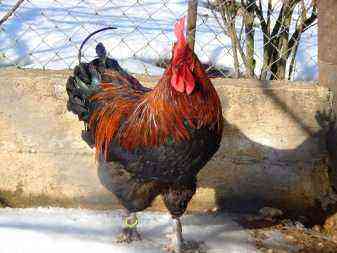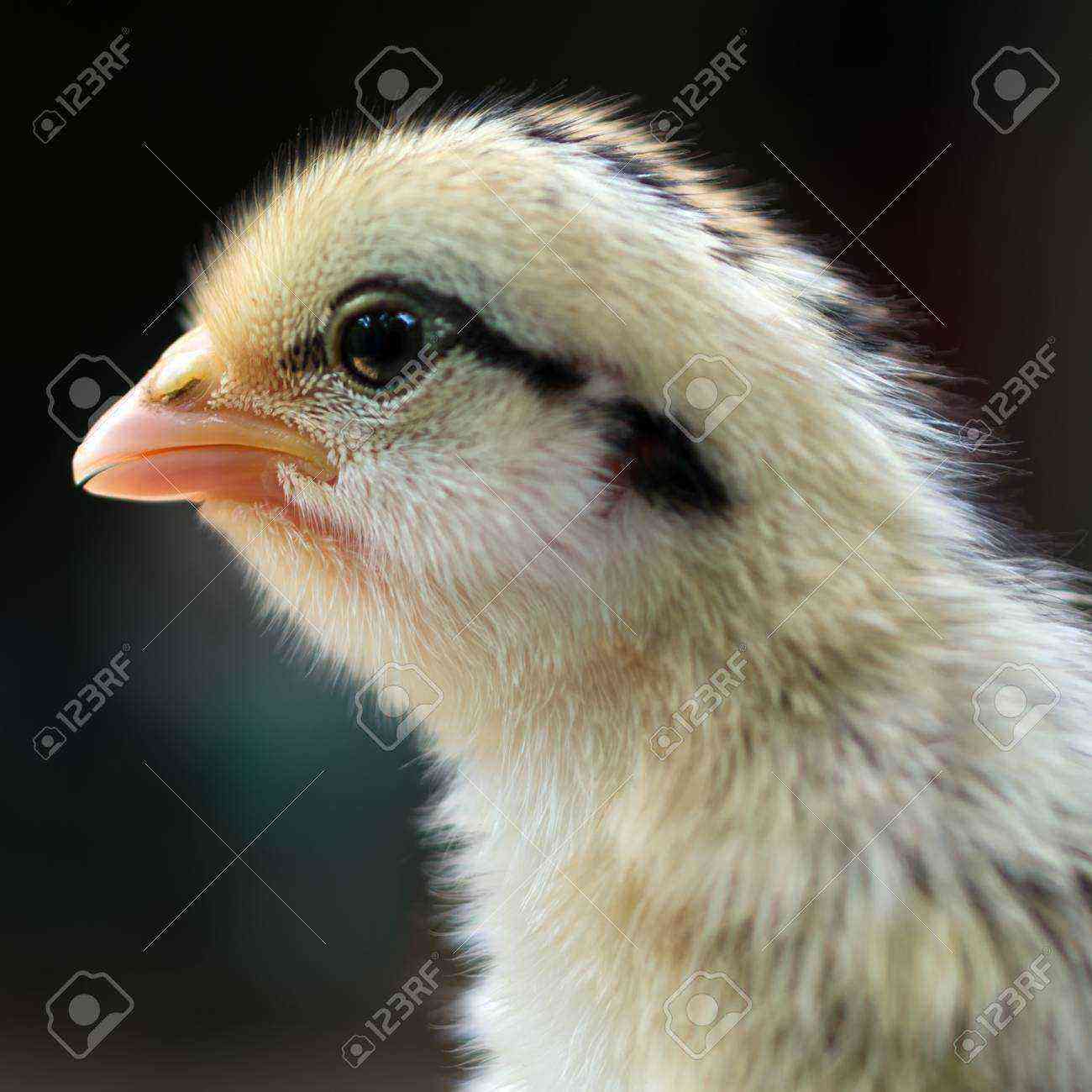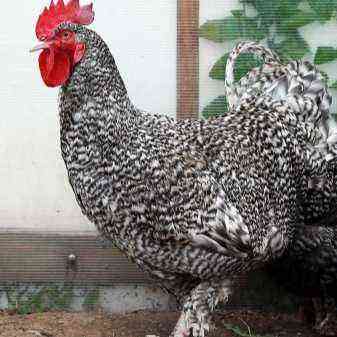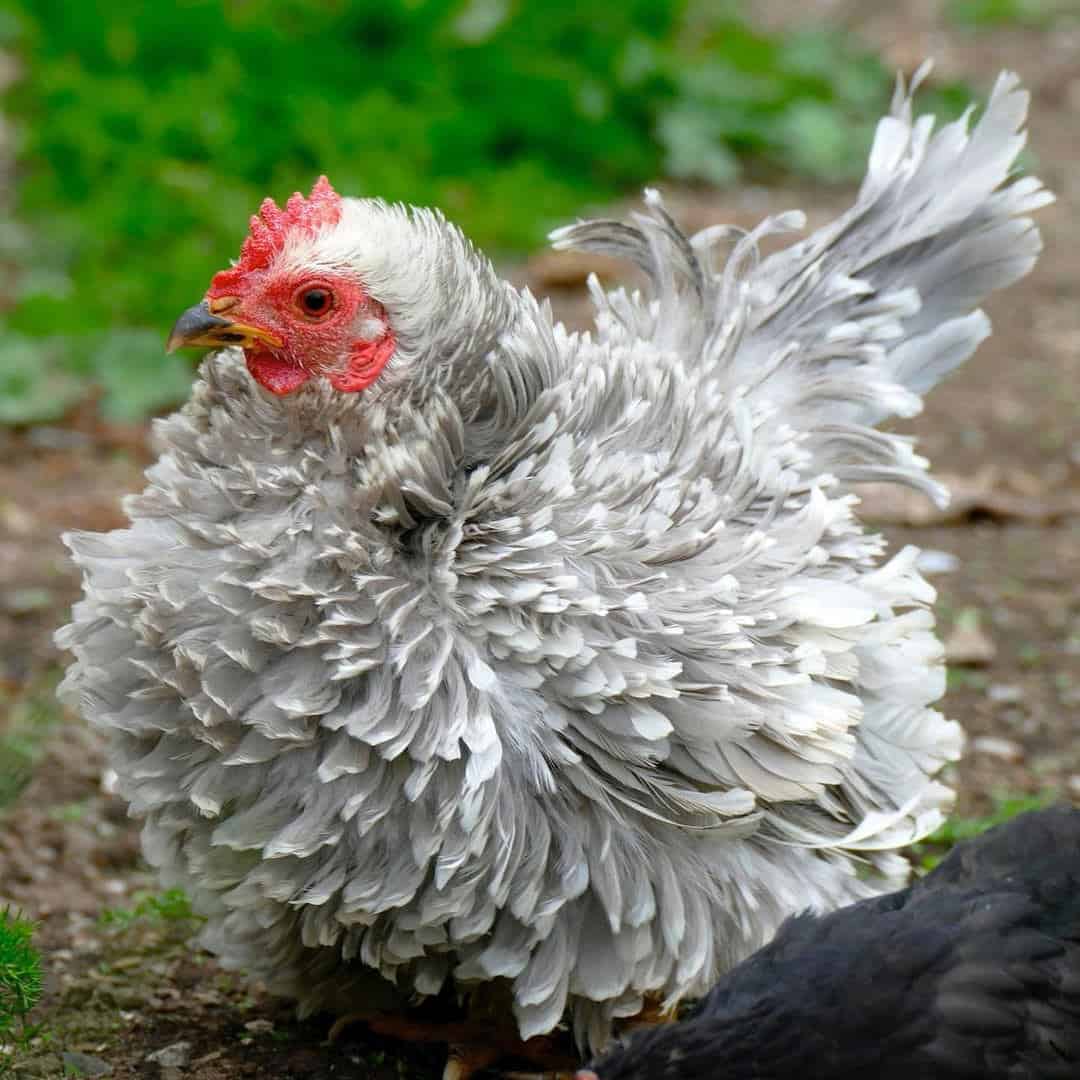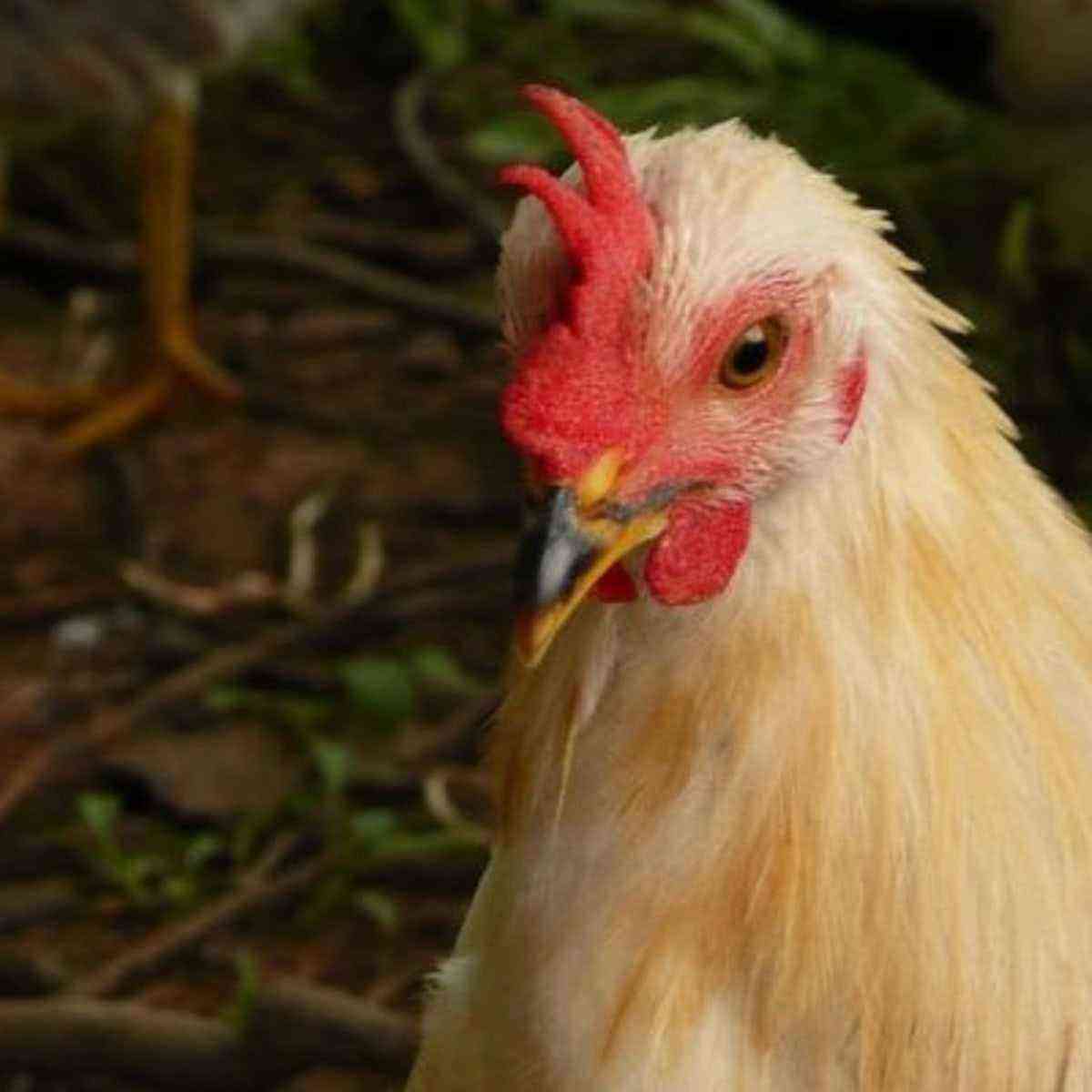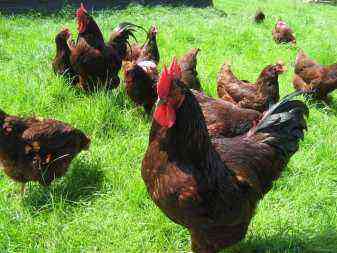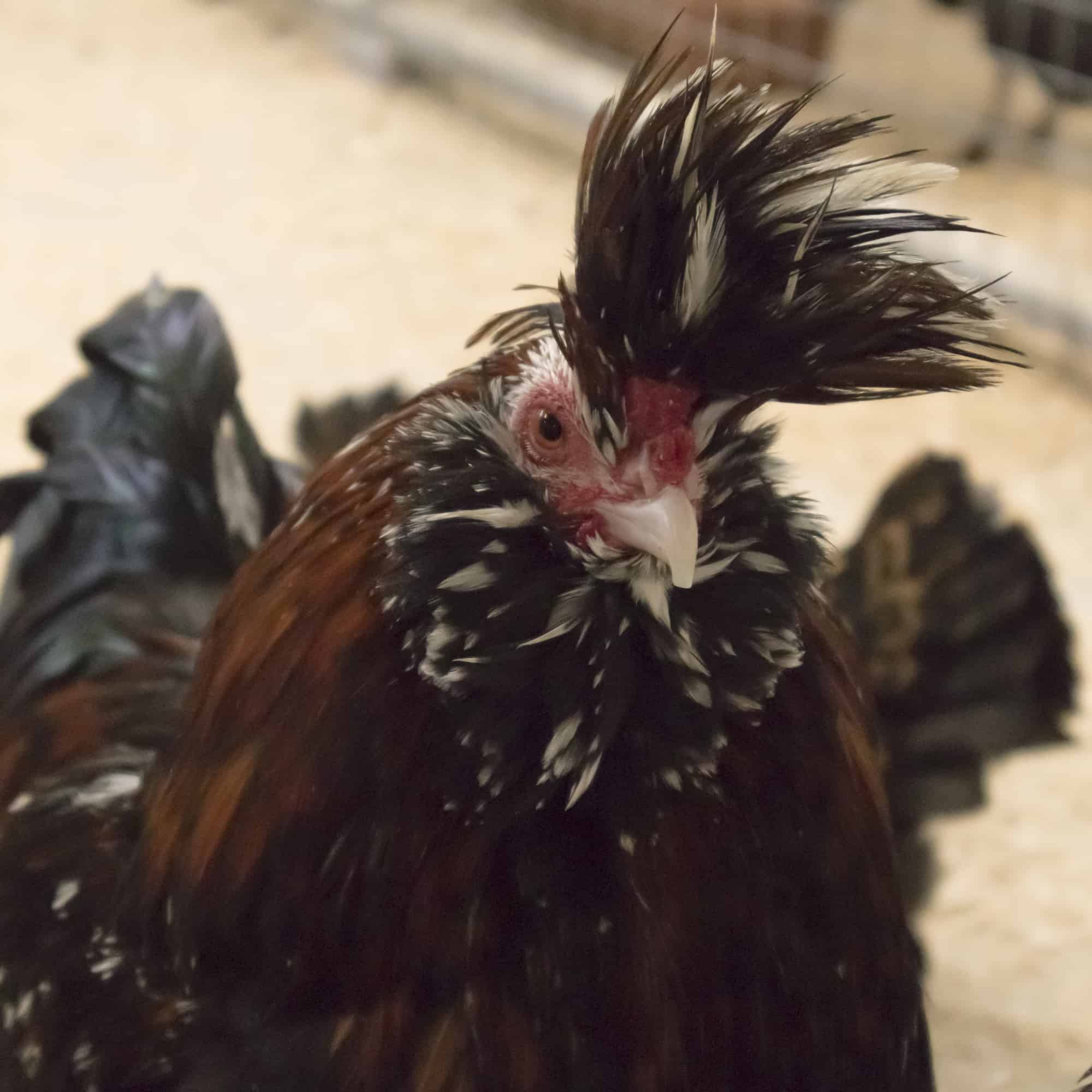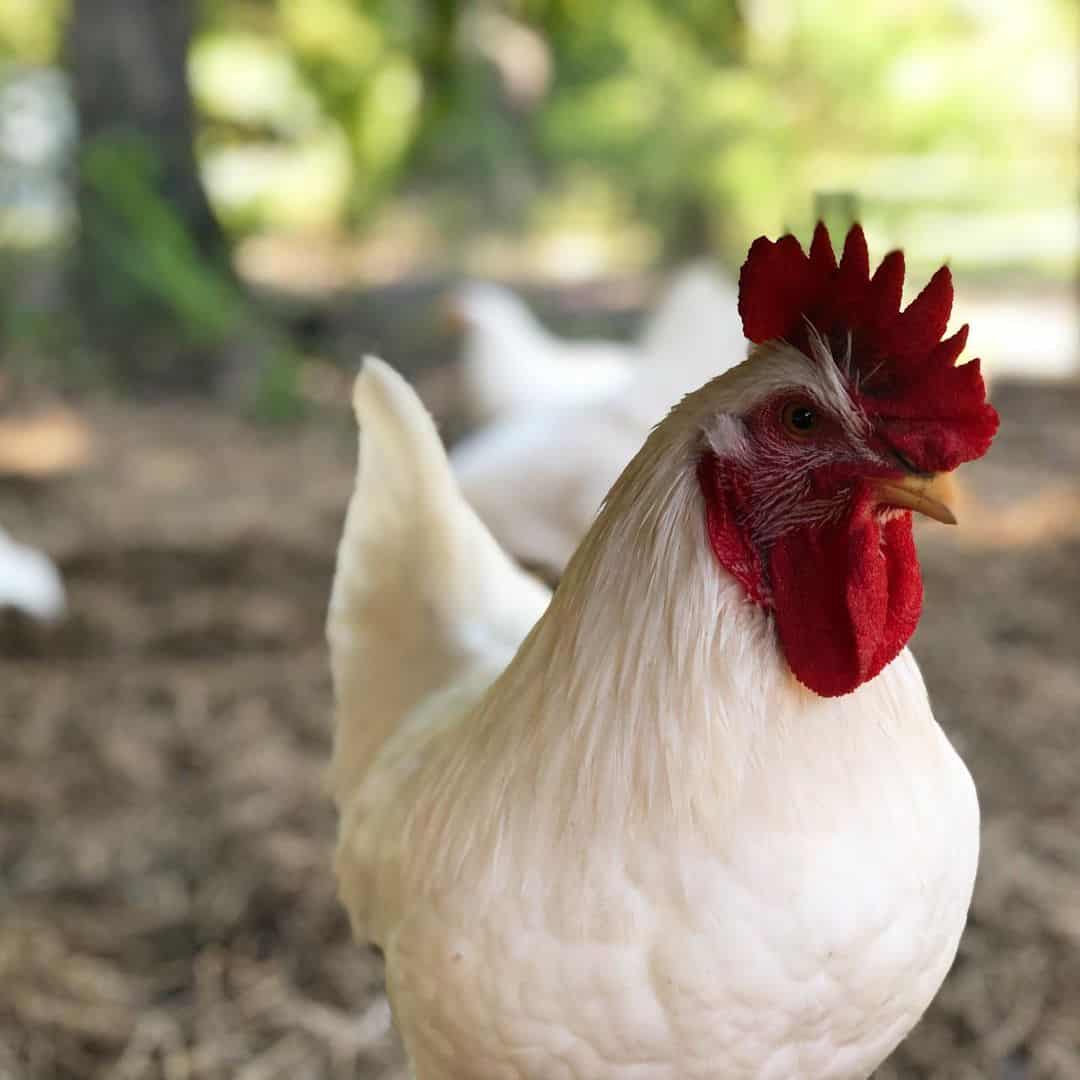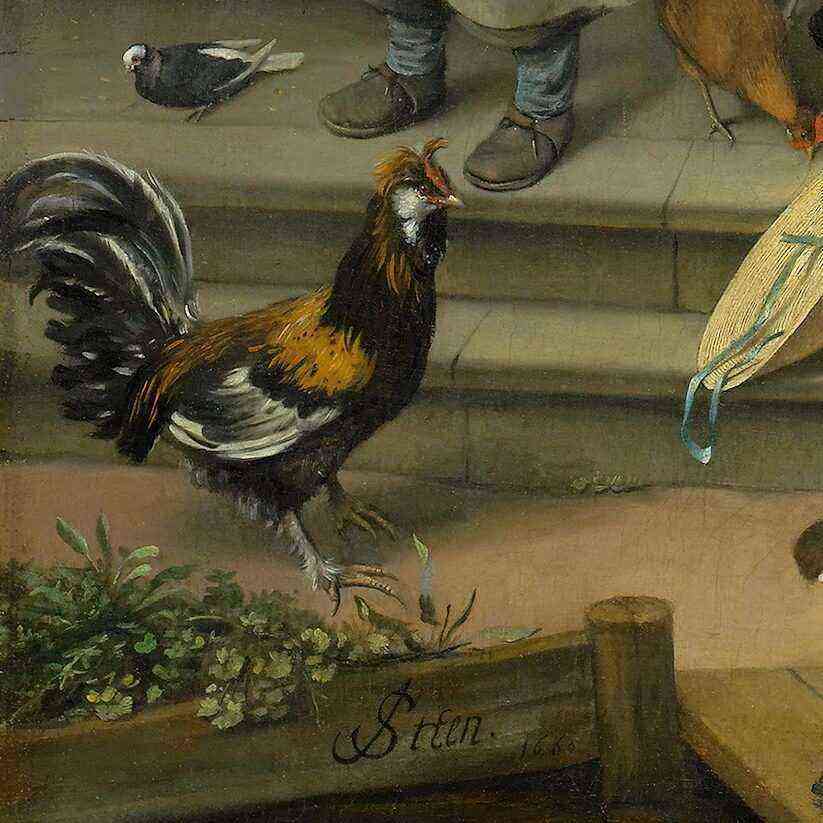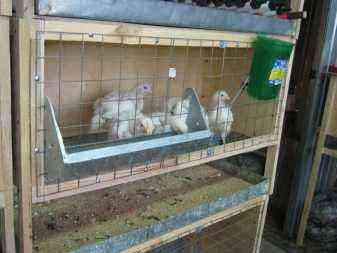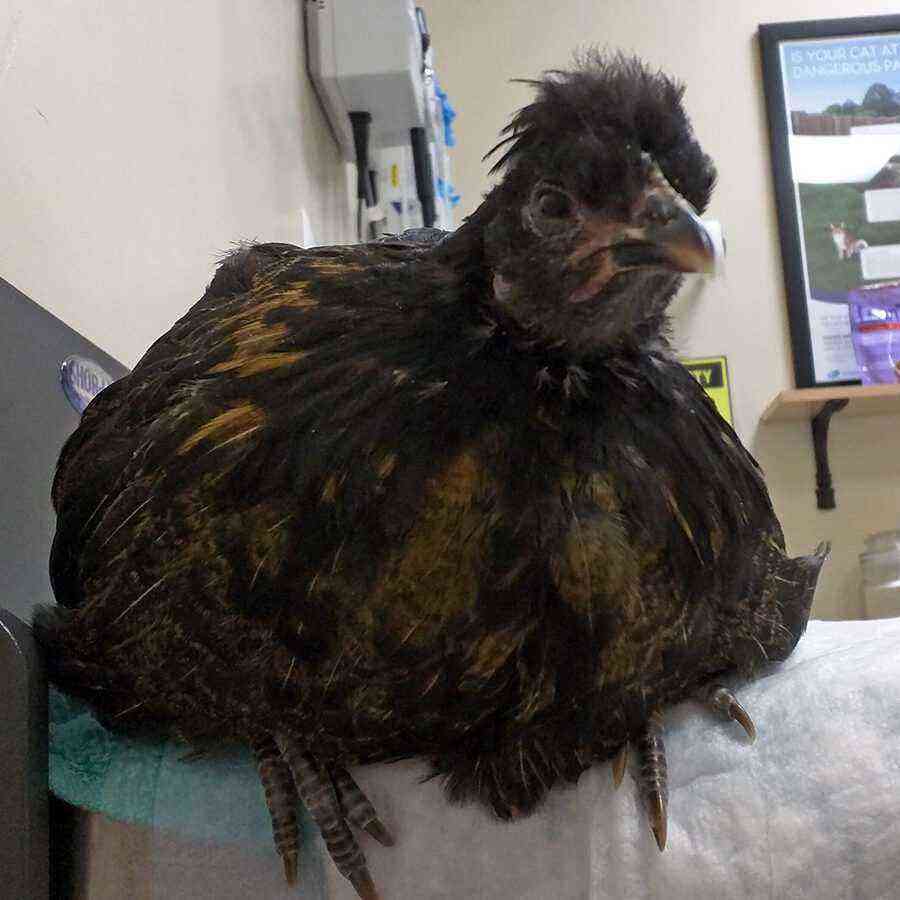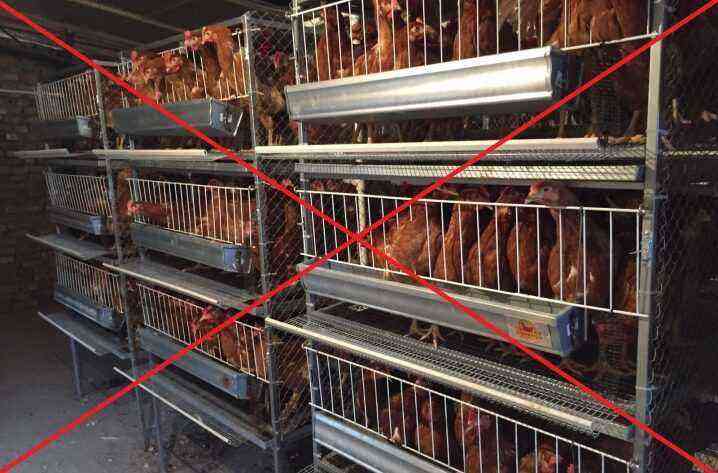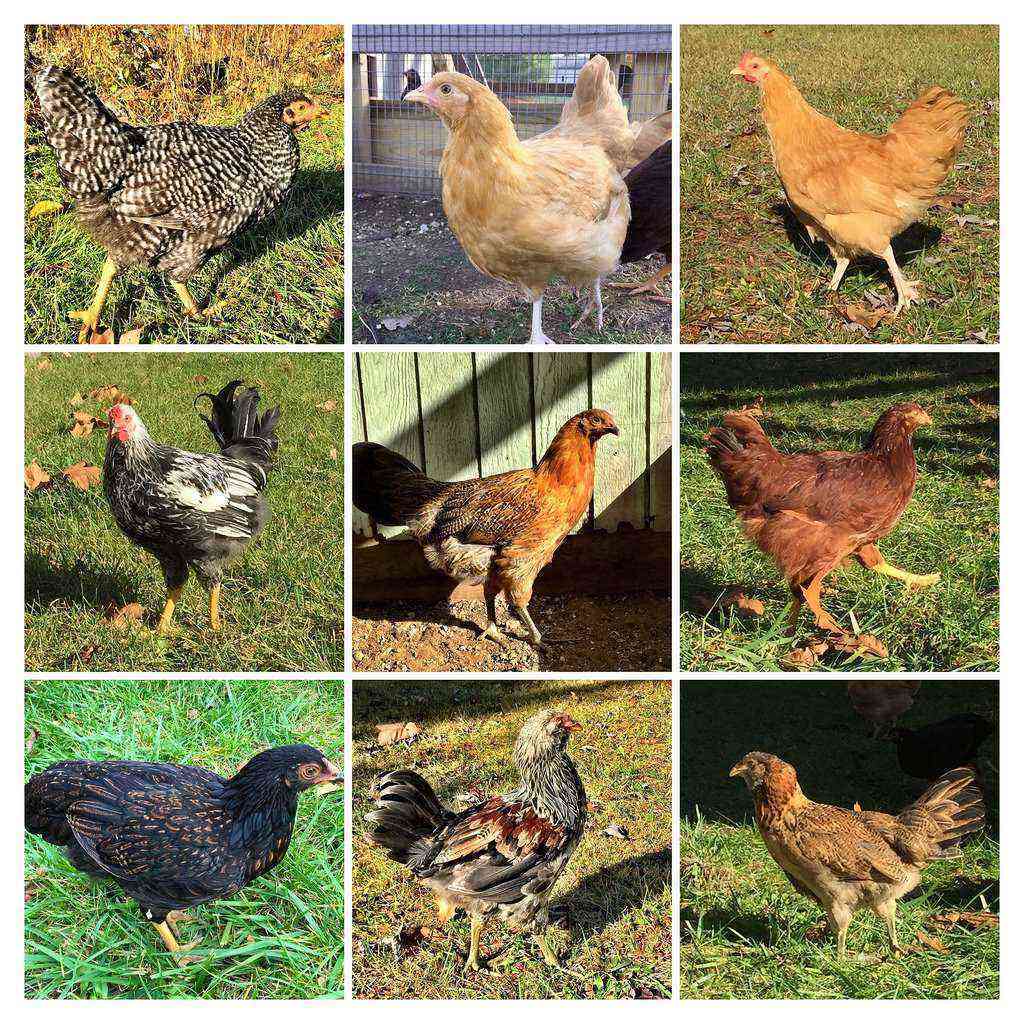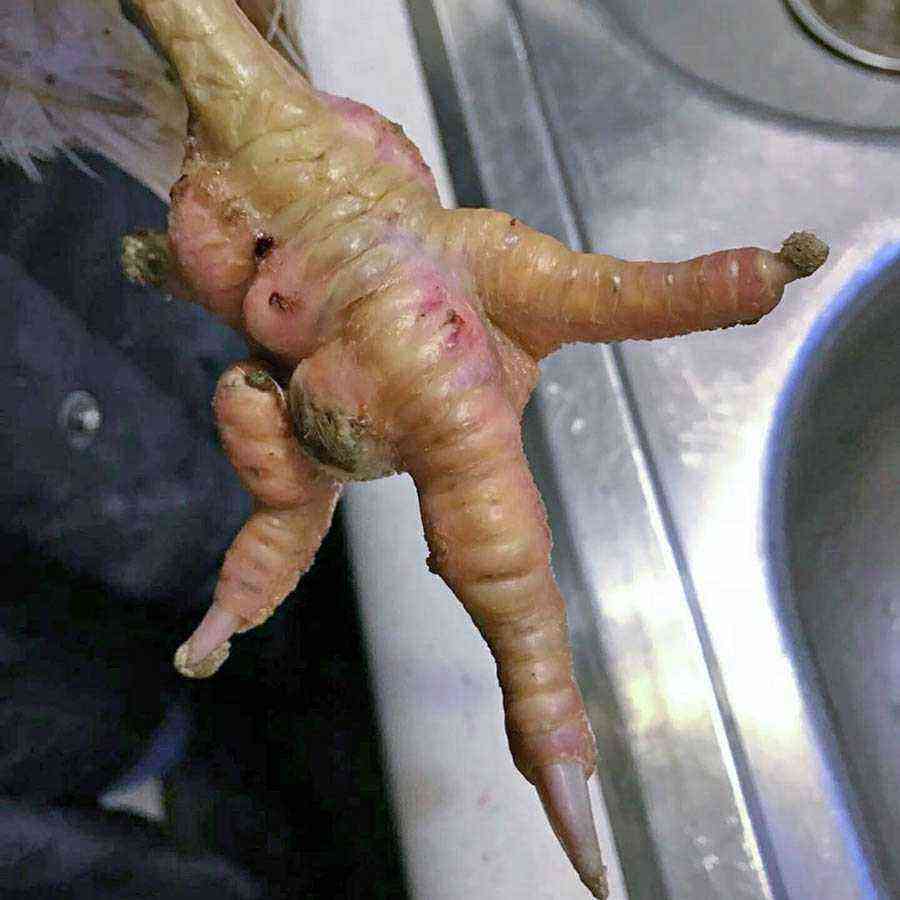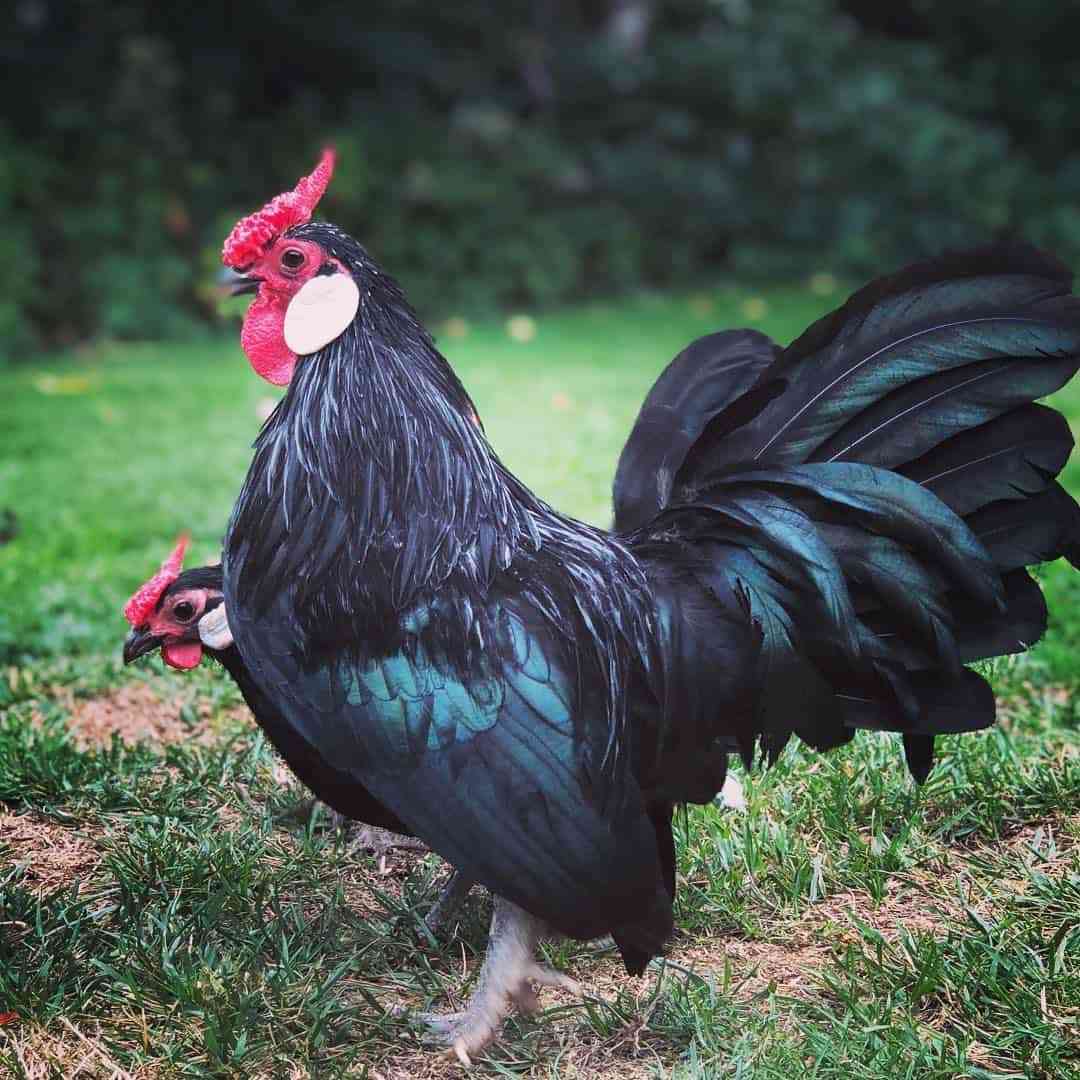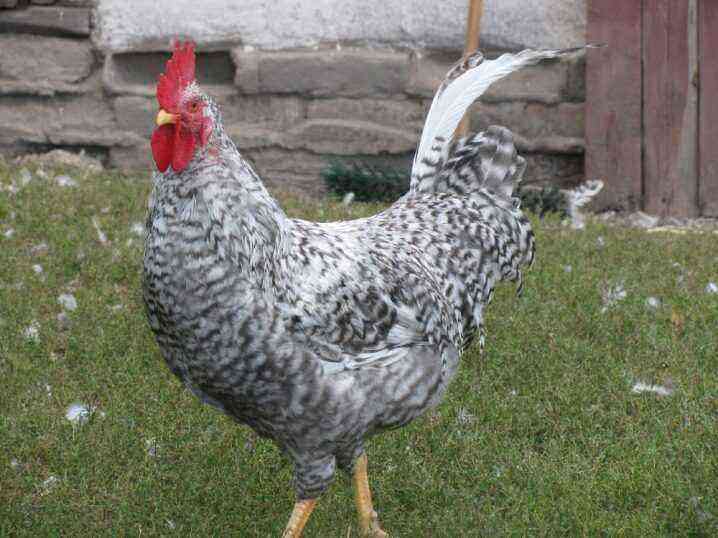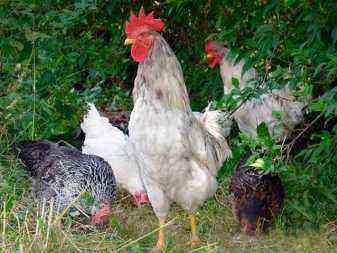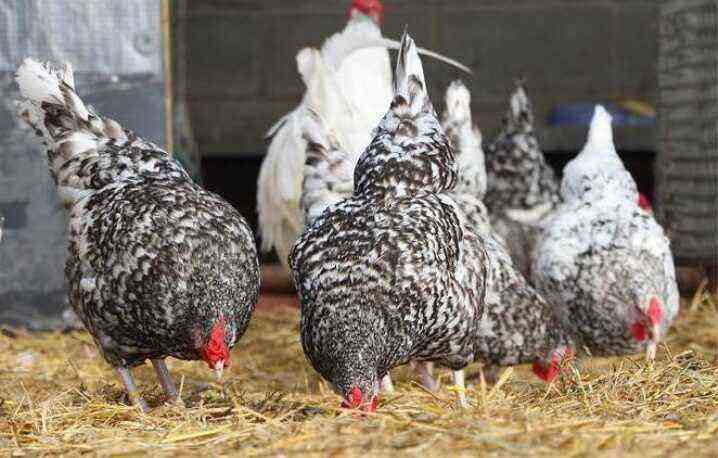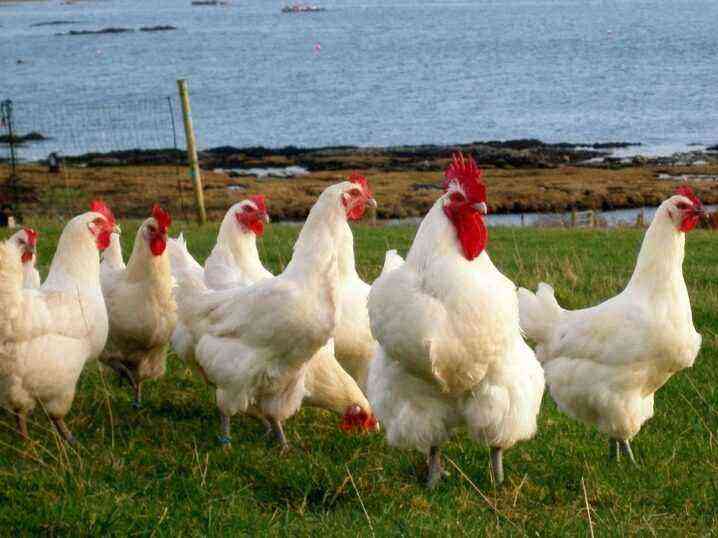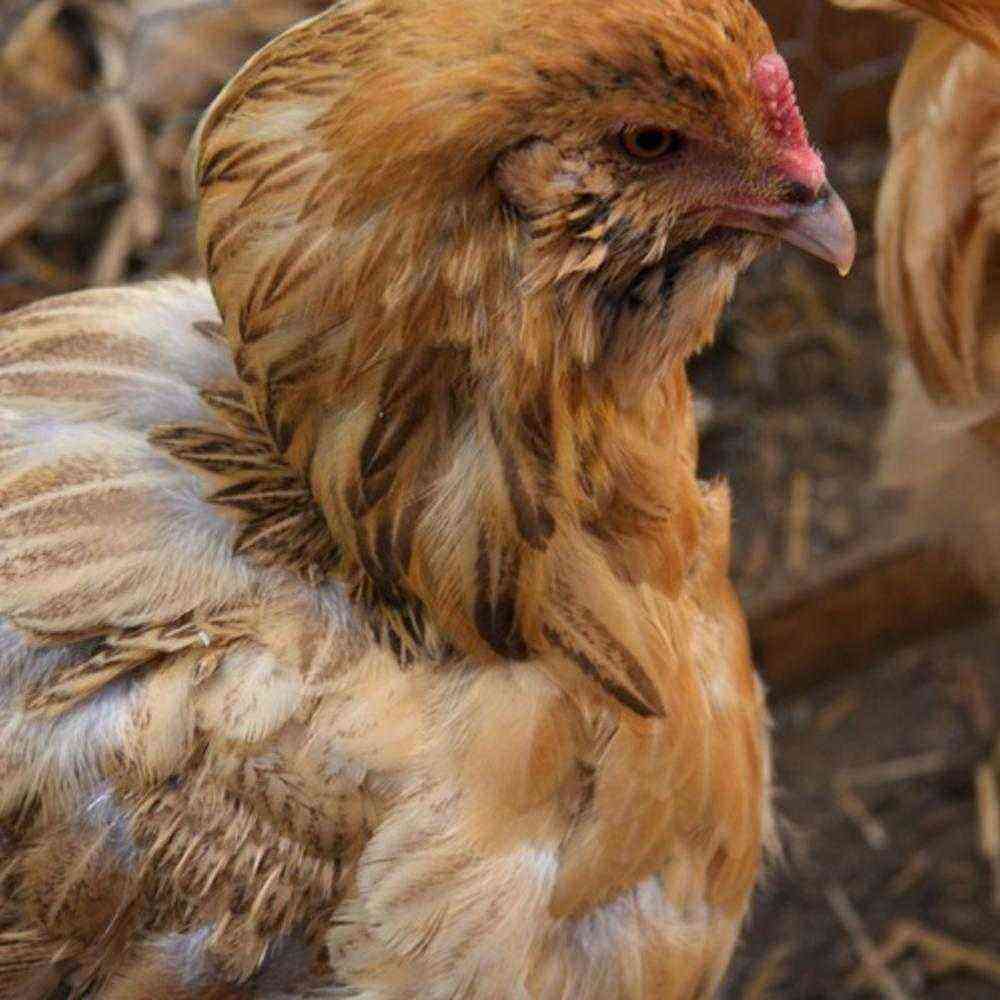There is hardly a person all over the world who does not know what a chicken looks like, because this bird was domesticated by man many millennia ago and has spread in a domesticated form throughout the planet. Such pets are useful for humanity in every sense: they provide not only valuable food in the form of tasty meat and healthy eggs, but for a long time they have been a source of soft fluff and feathers for various household needs. Modern domestic chickens have gone through thousands of years of selection and are now very different from their wild relatives. For example, they practically do not fly anymore, but they gain mass faster and rush more intensively, and are not afraid of cold weather.
Description
In general, it is not so easy to characterize modern domestic chicken – the huge variety of modern breeds makes such living creatures too heterogeneous, because there are not so many common features. Any chicken in terms of biological classification belongs to the pheasant family. Her body structure is typically avian: a bird moves along the ground on two lower limbs, the upper ones are transformed into wings, although domestic individuals usually do not fly or do it very poorly. Distinctive features of the structure are a small tail, which is an elongation of the body, and a beak. Like most other birds, chickens are covered in feathers, and some hardy breeds may also have a layer of soft down.
During the selection, a huge number of different breeds have been bred, some even have well-defined decorative functions, so there are many color options. Most often, ordinary pets turn out to be white, brownish-red or motley, males are generally brighter and more attractive than females, but there are exceptions to both of these rules. Size and weight also vary considerably.
In particular, an adult, depending on the breed and living conditions, can weigh one and a half kilograms, and seven.
What many farmers don’t know is that a typical domestic chicken can have a lifespan of around 12-16 years. In fact, in no farm, the wards do not even live close to such an age, except that they are grown exclusively for decorative purposes. If the chicken belongs to meat breeds, then it usually quickly gains weight, is characterized by maximum precocity, and it is slaughtered immediately, as soon as it ends its period of intensive growth, that is, within a few months after birth. Representatives of egg breeds live a little longer, until their egg production begins to decline. Therefore, their lifespan is usually about 3 years, after which they are also slaughtered.
History
Poultry farming is such an ancient branch of agriculture that today even scientists do not have an unambiguous understanding of where and how it first appeared. The generally accepted theory is that domestic chickens originated primarily from wild Banking chickens, whose homeland is Southeast Asia, but admixtures of other wild species are not excluded. Charles Darwin believed that chickens were first domesticated around 2 BC in India, but more recent research suggests that this could have happened much earlier, 3 or even 8 BC. Earlier dates are usually tied to more eastern regions, such as the same Southeast Asia or China. It is difficult to say exactly how such domesticated living creatures spread throughout the ancient world, but it is known that the victorious march of domestic chickens around the planet began a very long time ago.
So, in the drawings in the tomb of Tutankhamun, these birds are already present, and yet their age is estimated at almost 3,5 thousand years. A little less than 3 thousand years ago, such pets were already bred on the territory of modern Ethiopia.
The chicken was well known to the ancient Greeks, it is believed that it was with them that the spread of such living creatures throughout Europe began. In the Middle East, by the beginning of our era, this was already an extremely popular and sought-after domestic culture, which is repeatedly confirmed by the Bible. Considering that the modern world largely follows the customs of the Old World, whether in Europe or Asia, it is not surprising that domestic chickens have been present on any continent for at least several centuries.
Breeds
Considering that domestic chicken can be useful from completely different points of view, it becomes clear why mankind has bred so many breeds of this bird. The classification by breed is somewhat simplified if we divide them all into so-called directions, suggesting for what purpose this or that variety was bred. Let’s take a quick look at the most famous areas.
- representatives of meat breeds, such as brahma, kokhinhin, faverol or gudan, are considered the most common throughout the world. Chicken meat is universally valued for its taste and nutritional qualities, while it can be called dietary. Chickens of this direction do not complain about appetite, but they are not too mobile, which allows them to quickly gain weight, and farmers to grow huge populations in limited spaces. Chickens of some meat breeds can gain up to 60 grams daily, so in a matter of months a chicken can grow up to 4,5-5,5 kg, and a rooster up to 5,5-6,5 kg. A variety of meat breeds are broilers, characterized by extremely fast growth.
- Representatives of egg breeds always substantially less, for the simple reason that the vital forces of their organism are spent on a very intensive production of eggs. A specially bred hen (eg Leghorn, Highsex, Broken Brown or Minorca) can provide over 300 eggs per year for 3 years. For maximum productivity, it is necessary to provide the female with the right diet and sufficient space for walking, since an overweight bird partially loses its egg production.
- Meat-egg breeds, such as Adler silver, Wyandot, Poltava or Rhode Island, are well suited for small farms that do not want to choose between meat and eggs, getting both at once. Of course, such chickens give less meat than representatives of meat breeds, and do not rush as intensively as “professional” laying hens, but their versatility makes them extremely popular in various subsidiary farms. Among other things, such birds, as a rule, are relatively undemanding, and even have good health.
- Fighting breeds of chickens today they are practically not in demand, although once everything in the same Southeast Asia was very common. Such a bird should not give any meat or eggs, the main thing that is required of it is that the roosters are quite aggressive towards their relatives and can withstand fights with rivals. These are a kind of athletes of the bird world, on the basis of which some breeds of meat chickens are bred today.
- Decorative breeds, such as lakenfelder, are also not obliged to provide the owner with one or another type of product, they are rather a decoration of the yard. They are bred according to the same logic as dogs or cats – they are just pets that you can admire. So far, such breeding is not very popular, however, there are already quite a few breeds of decorative direction today.
In addition, some breeds may have a specific characteristic that makes farmers pay more attention to it. So, for Russia, frost-resistant breeds are of particular interest, which can withstand the harsh Russian winter, albeit in an insulated but unheated chicken coop. In representatives of some breeds, frost resistance is brought to such a high level that they fundamentally do not like heat, and in the south of Russia, for example, they are not subject to successful breeding.
At what age do they lay eggs?
If chickens are expected to lay, the farmer is probably looking forward to the moment when this will finally happen. In fact, it is impossible to determine in advance the timing of the start of egg production – it depends not only on the breed of bird, but also on many other factors. In particular, even specially bred hens lay eggs only if the care of the bird is correct, it eats balanced and in sufficient quantity, it has enough space for walking. There is a claim that puberty in pullets occurs at the moment when she gains about 3/4 of the weight of an average adult, but this is also just a theory.
At the same time, the breed still plays an important role, since eggs are expected from egg hens in the first place, while meat birds were clearly bred not so much for this purpose as for others. Therefore, approximate terms look approximately as follows.
- Representatives of egg breeds start laying before any other hens. As practice shows, it will take about 17-20 weeks to wait for the first egg, in other words – 4-5 months.
- Meat-egg breeds they are also obliged to give quite a lot of eggs, but at the same time their body is focused on rapid growth, and therefore a significant part of its forces is spent on solving this problem. Accordingly, puberty occurs a little later, namely at the age of 20-24 weeks – 5-6 months. If for some reason a bird of this breed has not begun to lay by the age of 6,5 months, there are health problems or categorically incorrect content.
- Meat also rush, since this is an inevitable feature of their reproduction, however, the number of eggs will be much smaller, and puberty will come later. As a rule, it is not worth waiting for eggs from such a chicken before 7,5 months.
Please note that the first eggs of a laying hen of any breed will be relatively small. If a store product usually weighs 60-70 grams, then an early home-made “harvest” will usually not be heavier than 45 grams. In terms of quality, such eggs are in no way inferior to any others, on the contrary, many gourmets claim that at least their yolk is tastier.
After a few weeks, the product reaches its average size.
There are various tricks and tricks, thanks to which a chicken can start laying a little earlier than is usually the case with representatives of the same breed. As a rule, artificial stimulation consists in the formation of a certain diet, but livestock specialists usually do not advise doing this. By provoking too early egg production, you run the risk of quickly depleting the young organism, which in the future will affect both the intensity of egg production and the duration of this process in a particular chicken.
As for the duration of egg production, under experimental ideal conditions, the chicken does not stop laying until old age: exhibition decorative specimens gave eggs even after reaching the age of 15. Another thing is that the most intensive breeding period for these birds falls on the first couple of years of life, after which egg production inevitably falls. The annual decline in productivity is 10-15%, and over time this figure can increase. If representatives of egg breeds are at their peak for the first 3 years of their lives, then meat and egg breeds, and especially meat breeds, which are not too generous in this regard, can begin to decline as early as 2 years of age.
As a result, the average 5-year-old chicken usually rushes no more than 2 times a week, and even then only at best, because it is slaughtered much earlier, because at that age it is no longer able to please with tasty meat.
Two-yolk eggs can appear in chickens of any age, and there are a variety of reasons for this. However, if the chicken as a whole is completely healthy, and the breeder himself does not stuff it with various hormonal drugs, this phenomenon may indicate that the bird’s reproductive system is weakening, which means that egg production will inevitably decrease soon. If the age of the pet also indicates the imminent completion of the peak of productivity, then the increase in such phenomena makes it possible to understand that it is time to change the laying hen to a younger one.
Features of the content
One of the reasons for the wide distribution of chickens around the world is also that the care of this bird is relatively simple even for beginners. At the same time, you should not think that for any chicken the growing scheme is the same – egg layers require the same conditions, and meat chickens require completely different ones. If we are talking specifically about representatives of the egg breed, then it is very important for them to provide convenient conditions for nesting. As a rule, nests are built not so much by the bird itself, but by a farmer who equips the chicken coop with small plywood boxes lined with straw bedding. It is assumed that the sides of such a box should be low so that the bird can freely enter and get out. In addition, the design must provide ease of changing the litter and removing the eggs.
One of the fundamental conditions for high egg production is a thoughtful diet. It is undesirable to feed laying hens with scraps from the table, special compound feeds and premixes that already contain everything necessary not only for the health of the chicken, but also for the formation of a new full-fledged egg will be much more useful for them. At the same time, egg-laying birds are prone to obesity, which will have a bad effect on egg production, so the diet should not contribute to weight gain. For this reason, the cage content of hens is highly undesirable – on the contrary, they need sufficient space for constant walking.
Naturally, access to water should be constant and unlimited.
Among other things, to ensure high egg production, birds need to provide optimal conditions. This means that even a hen with good immunity must be constantly kept at a sufficiently high temperature, it should be protected from excessive humidity and drafts. Considering that living creatures spend a significant part of their time in the nest, it is necessary to monitor the constant cleanliness in it.
Broilers and representatives of meat breeds need completely different conditions. First of all, such birds have a much calmer character, which does not force them to be in constant motion. In addition, excessive activity would inevitably lead to weight loss, so meat-oriented chickens are much more likely to be kept in cages.. If in egg breeds the benefits are provided exclusively by females (not counting the fact that one rooster per ten hens supports the population), then for meat breeds it is the males that are somewhat more valuable, since they are the heavier ones.
Cage breeding allows you to keep a huge population in a relatively cramped chicken coop, cages can even be arranged in several tiers, but the design of the barn should be thought out so that cleaning and changing the litter does not create unnecessary problems.
Obviously, rapid weight gain is impossible without a certain diet, which should not even be so plentiful (although plentiful too), but properly balanced. Youth raised with an eye to slaughter must be fed according to a certain scheme:
- in the first 7 weeks life in the diet should contain as much protein as possible – at this stage, the body’s ability to gain weight is laid;
- in the period of 8-13 weeks the dosage of protein is no longer increased, the growing need of the young organism for food is compensated by the crude fiber present in plant products;
- between 14 and 18 weeks the amount of protein begins to decrease even in absolute terms, but grass flour is given more and more;
- after 18 weeks representatives of meat breeds are usually purposefully prepared for slaughter within a month or one and a half – now protein again makes up the predominant part of the poultry diet, being diluted with calcium-based mineral supplements.
Please note that representatives of some meat breeds develop relatively slowly, and therefore late chickens may not have time to become full-fledged adults by winter. For babies, this poses a certain risk – not having time to get stronger over the summer period, it becomes more difficult for them to survive the cold. Therefore, a farmer who raises chickens with the help of an incubator and does not have a good warm barn should hasten to bring out the young growth no later than June.
Among other things, a common mistake is a false definition of the disease in representatives of the meat breed. Everyone knows that such a chicken does not differ in stable egg production, but still, for many beginners, it turns out to be unpleasant news that at some point the chicken stops laying altogether. In fact, this is not an indicator of illness at all, it’s just that most meat chickens do not rush all year round. Sometimes the egg-laying period is limited to only 7 months.
The moment when egg production stops is not only cold, but also molting.
Breeding at home
Breeding poultry at home can involve different farming schemes – from a self-healing population to annual purchases of already hatched young with their slaughter by the end of the year. Many breeders today prefer to use modern technologies, therefore, not pullets, but an incubator are trusted to hatch chickens – this is especially true given the fact that some breeds have lost much of their maternal instinct during the selection process. If you choose eggs from your own farm for incubation, you should choose eggs that were laid by healthy chickens. Too large specimens, as well as too small ones, are rejected – only medium-sized specimens should enter the incubator.
Eggs for subsequent incubation can also be bought from other farmers, but this is done relatively rarely – you cannot know in advance what and in what quantity will hatch from the purchased raw materials. For this reason, beginners are much more likely to buy already hatched babies, which at the time of sale may be only a day old.
In most breeds at this age, sexual characteristics are still not determined, therefore, for egg or meat-egg breeding, this is a certain risk.
After the purchase, the chickens are placed in a box of sufficient size, where they will spend the first time. Please note that the material of the box should not be foam or cardboard – curious young people will either peck at excess synthetics and get poisoned, or suffocate, or get stuck with their beak in the wall and die from this. An impromptu small paddock is lined with a layer of newspapers, which in the future will need to be changed twice a day, a drinking bowl and a feeder are installed.
At first, for babies, to whom new chickens can still be planted, a high temperature of about 30 degrees is very important – for this, a lamp is attached above the box. You can determine how happy the kids are by their behavior: in case of excessive heat, they defiantly look for a shadow, in conditions of insufficient heating they huddle together. On the first day, artificial illumination is necessary for 17 hours, then the length of daylight hours is gradually reduced up to 8 hours.
Babies need to have constant access to fresh water.
As young people grow, they no longer need 30-degree heat, therefore, from day 5, the temperature is reduced to 26 degrees, and then weekly by another 3 degrees, until the value drops to +18. After that, the young are transferred to a straw bed and gradually increase the area available to them.
Diseases
If you properly care for chickens, the likelihood of any diseases in them will be low, but still the penetration of an infection or the occurrence of a non-infectious disease is possible. It is possible to determine that a bird is sick even by its appearance – it looks passive, has a reduced appetite. In addition, there are even more obvious signs that not everything is fine – for example, there is inappropriate molting during this period and even baldness, rashes and peeling of the skin under the feathers, diarrhea and intense thirst. If it is already obvious that an individual is sick with something, just in case, it is better to isolate it from the rest of the population in order to stop the spread of a possible infection.
Layers of egg breeds are especially susceptible to infection with various infections, including salmonellosis, pullorosis and pasteurellosis.
The causative agents of these diseases can be present not only in meat, but also in eggs, and especially on their shells. Due to this, pathogens are able to enter the human body, and in fact they are also dangerous for humans. Even an experienced farmer should not try to treat a bird that has become ill with such ailments on his own – this task is complex, its solution can only be complex, therefore, treatment should be entrusted only to a professional in his field.
Broilers and representatives of most meat breeds are less susceptible to infections, and such birds have much less chances to encounter them – the cellular content is not conducive to adventure. For this reason, most ailments are caused by improper content. For example, due to the allowed draft, the livestock can simply catch a cold. Digestive disorders are also common, which are provoked by an improperly composed diet – as a result, even intestinal diseases can develop.
Finally, painful signs may be a manifestation of beriberi or hypovitaminosis, which in general also refers to nutritional deficiencies.
How to make and equip a poultry house with your own hands?
A typical chicken coop is a barn where the birds can hide from the cold, and an aviary or open pen where they are provided with the opportunity to run. For a summer residence or an individual subsidiary farm, where representatives of meat and egg breeds are usually kept, it is precisely such a layout that is required, since cellular content is only appropriate for meat breeds. The chicken coop itself, that is, the barn, must have an area sufficient to accommodate the entire livestock. Egg breeds that do not live in separate cells usually require 1 square meter of floor for 3, sometimes 4 individuals. For the construction of a poultry house and a fence, it is extremely important to use not only heat-insulating, but also environmentally friendly materials that will not poison pets.
Sawdust or straw bedding in the chicken coop is required, it prevents the occurrence of excessive humidity and is a thermostat. It must be changed regularly, since chicken manure is an excellent breeding ground for pathogenic microorganisms. Various parasites can also start in it, the easiest way to deal with them is by periodic treatment with insecticidal preparations.
The temperature in the chicken coop is considered optimal if it is maintained at a level between 11 and 22 degrees Celsius.
Most breeds can withstand even lower values, but then for increased heat production in the body of birds, they will have to be fed more intensively. As practice shows, an increase in temperature negatively affects the egg production of pets, because the egg collector in the heat may turn out to be completely empty.
High humidity contributes to the intensive reproduction of harmful microorganisms, but if the air in the room is too dry, too much dust forms inside, and that, in turn, can provoke problems with the respiratory system. Drafts, of course, are not welcome – they can cause a cold in birds, but there must be a possibility of ventilation. For this purpose, sheds are often equipped with opening windows; in large farms with a serious approach, even the installation of hoods is not ruled out.
Despite the fact that the chicken coop should be lit, birds that come from the dense jungle do not need too bright light at all. On 10 square meters of barn area, you need to use one 60-watt incandescent lamp or any equivalent that gives the same amount of lighting. With increased darkness, chickens will not be active enough, perceiving any time of day as night. With excessively bright light, increased irritability and nervousness are noted.
When designing a chicken coop, perches should be taken into account in the layout – special horizontal perches around the perimeter of the room on which chickens can sit. When deciding on the thickness of such bars, pay attention to the weight of the individuals of the desired breed. Some of them can break the middle perch, not designed for their weight, for others, the large mass simply does not allow them to take off, even reaching a low-lying pole. To simplify the care of the chicken coop, many farmers specially place wooden boxes for manure right under the perches – then the litter can be changed a little less often. For laying hens, it is also desirable to equip nests in the form of wooden boxes filled with straw.
The hen will not lay her eggs in a place where it is cold, very light or there are drafts, so you should carefully consider the location of the nests.
Reviews of poultry farmers
You do not need to specifically look for relevant comments on the Internet in order to understand that breeding chickens is a profitable business, at least when the process is properly organized. This is proved by the global prevalence of this bird, which, in terms of population size, is able to give odds to any other domesticated birds. Feedback from poultry farmers on specialized forums, of course, only confirms such logical conclusions.
At the same time, from the experience of many breeders, it is clear that it is important not only to properly organize the cultivation and maintenance of birds, but also to find “your own” breed that ideally suits your needs and capabilities. In many cases, the pursuit of universal breeds of chickens does not give the desired result, therefore, many successful entrepreneurs who started out as simple farmers advise trying to grow different birds. As a result, chickens can become a valuable source of tasty and healthy meat, nutritious eggs, and also, for supporters of a completely natural economy, feathers and down.
For information on how to properly care for domestic chickens, see the following video.

